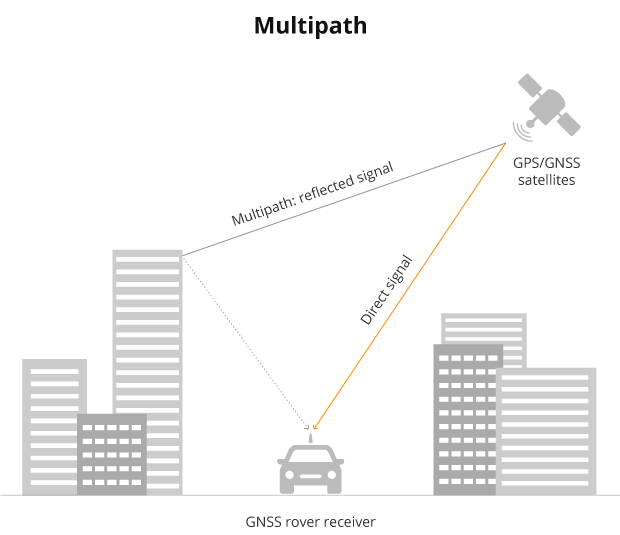Image: Septentrio from tech paper at https://www.septentrio.com/en/apme-multipath-mitigation-technology
Blog Editor’s Note: An interesting blog post from Spirent that was also a paper and presentation at the recent International Timing and Synchronization Forum.
Especially interesting in light of two other recent Spirent blog posts about the potential for 4G and 5G networks to be used for positioning and navigation to support autonomy.
Timing is fundamental for all these technologies and has to be rock-solid for today’s safety and security, and to enable the tech we need for tomorrow. See our white paper “A Resilient National Timing Architecture.”
Disclosure – Spirent is a corporate supporter of the RNT Foundation.
Multipath GNSS signals are a threat to timing receivers in 4G and 5G networks
October 28, 2020
Cellular networks rely on GNSS timing receivers for accurate time & sync. Our tests show that multipath signals present a significant threat to timing receivers installed in dense urban locations.
NOTE: This blog is a summary of a paper I will present with Calnex at ITSF 2020 on Wednesday 4th November 2020 at 16:40 GMT.
Timing is a challenging element of modern telecommunications networks. To allow the smooth transfer of calls and data across the network, the individual base stations (BS) of a cellular network must be highly synchronised. That means there must be a common, dependable reference time source that all cells can be synchronised to.
In most cellular networks, that source is the time signal broadcast by GPS and other global satellite navigation systems (GNSS). It’s acquired by a GNSS receiver in the network’s Primary Reference Time Clock (PRTC), which uses it to generate a 1PPS time signal. That acts as the reference signal for time, phase and frequency synchronisation across all of the other clocks in the network.
To prevent the subsidiary clocks from drifting out of sync, as they will tend to do within a matter of hours, the PRTC must continuously re-obtain GNSS time and redistribute it over the network.
GNSS time may not always be reliable
While architectures may differ, this is the basic approach to time & sync in cellular networks, and it usually works well. However, it does rely on a critical assumption: that the time generated from GNSS is accurate and reliable. In reality, that assumption may not always be true.



